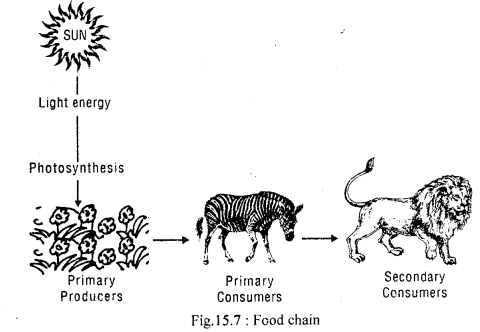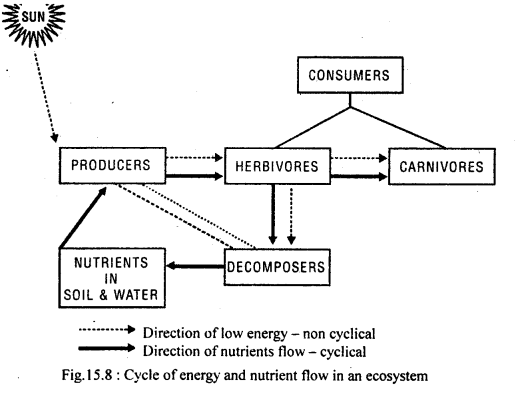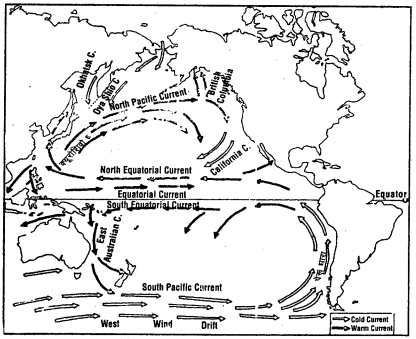Here we are providing Class 11 Geography Important Extra Questions and Answers Chapter 2 Structure and Physiography. Important Questions for Class 11 Geography are the best resource for students which helps in class 11 board exams.
Important Questions for Class 11 Geography Chapter 2 Structure and Physiography
Structure and Physiography Important Extra Questions Very Short Answer Type
Question 1.
Where did the Tethys sea exist?
Answer:
Tethys was present there where the Himalayas and northern plains are present today.
Question 2.
What are the main physical divisions of India?
Answer:
- Northern mountains,
- The Great Plains,
- Peninsular Plateau,
- Coastal Plains and
- Islands
Question 3.
What is the length and breadth of the Himalayas?
Answer:
Length is 2,500 km, breadth is 150 km to 400 km.
Question 4.
Name the four largest glaciers of India.
Answer:
Siachin, Hispar, Baii’o and Baltoro.
Question 5.
What do you mean by ‘duns’?
Answer:
These are the flat-floored valleys between Sivalik and Himachal.
Question 6.
What type of sand dunes are present in the ‘Thar desert’?
Answer:
Longitudinal, Barkhans, and Transverse type.
Question 7.
Name two passes of the Western Ghats.
Answer:
Thai Ghat and Bhor Ghat.
Question 8.
Name two rift valleys found in India.
Answer:
Narmada and Tapti.
Question 9.
Which plateau is found in the northeast of the peninsula?
Answer:
Shillong plateau.
Question 10.
What is the height of three peaks of Himalaya, having a height of more than 8,000 m.?
Answer:
- Mount Everest 8,848 m.
- Kanchenjunga 8,598 m.
- Annapurna 8,078 m.
Question 11.
Name the highest peak of the Alps mountain.
Answer:
Mont Blanc.
Question 12.
What is the name of the outer Himalaya?
Answer:
Shivalik.
Question 13.
Name the highest plateau of India?
Answer:
Ladakh.
Question 14.
Name the largest physiographic division of India.
Answer:
Peninsular plateau.
Question 15.
Name the important passes in the Himalayas.
Answer:
Jelepa, Nathula, Chola, Zojila, Patkoi, Bomdila, Changla, Karakoram, etc.
Question 16.
Which rivers drain in the Punjab plains?
Answer:
Satluj and Beas drain in Punjab.
Question 17.
What is ‘Marusthal’?
Answer:
The land which is inhabited by the Gonds, Santhali, Oraons, and Bhils is known as Marshal.
Question 18.
Name two Saline lakes of Rajasthan.
Answer:
Sambhar and Didwana are two saline lakes of Rajasthan.
Question 19.
Name the two major island groups in India.
Answer:
The Bay of Bengal and the Arabian Sea.
Question 20.
Where is Barren island located in India?
Answer:
It is located on the Nicobar Islands.
Question 21.
Name the important peaks of Nicobar islands.
Answer:
Saddle peak, Mount Diavolo, Mount Koyob, and Mount Thuiller.
Question 22.
Name the submerged coastal plain.
Answer:
Dwarak is the submerged coastal plain.
Question 23.
Which part of the north-western plateau has a complex relief of ravines and gorges?
Answer:
Chambal, Bhind, and Morena have complex relief of ravines and gorges.
Question 24.
In which period were the Aravallies uplifted?
Answer:
Vindhyan period.
Question 25.
Name the eastern boundary of the Deccan plateau.
Answer:
Rajmahal Hills.
Structure and Physiography Important Extra Questions Short Answer Type
Question 1.
“The peninsular plateaus and the Himalayas mountains are quite different from each other in respect of stratigraphy, geological structure, and physiography.” Comment.
Answer:
The northern mountains are young, weak, and flexible and have suffered from folding and deformation. The peninsula contains mostly residual mountains. Here, the river valley is shallow having low gradients. On the other hand, the Himalayas mountains are tectonic and rivers are torrential. The formation and development of the surface of the land like mountains, plateaus, and plains are called physiography.
Question 2.
What is Bhangar?
Answer:
The south of Terai is a belt consisting of old and new alluvial deposits known as Bhangar. These areas stand above the level of floodwater and the flood plains. This land is made up of clay pebbles and gravel. In Gangetic plains, these alluvial lands have been formed by the deposition of sandbars by the river.
Question 3.
What is Doab? Give few examples from India.
Answer:
The plain formed between two rivers is known as Doab. It separates two rivers but maintains its uniform character over the whole area. In Punjab, Doabs maintain the physical characteristics of the Punjab plain.
- Best Jalandhar Doab
- Bari Doab
- Chaz Doab
- Sind Sagar Doab
Question 4.
What is Karewas?. Where do they found?
Answer:
In the valley of Kashmir, the lake deposits comprise thick deposits of glacial clay and other materials embedded with maintaining, These deposits occur in the valleys within the Himalayan mountain where there was once glacial action and deposition of Morain.
Question 5.
State two important characteristics of the topographic complexity of the Himalayas.
Answer:
The young mountains of the Himalayas are formed by the internal horizontal earth movements. They have characteristic topographic. complexity.
- The Greater Himalayas, the Lesser Himalayas, and Shivalik are three main parallel ranges.
- These ranges have striking contrasts in their altitudes with snow-capped peaked, deep valleys, gorges, hanging valleys, ridges, etc.
Question 6.
Give three characteristics of the Himalayas, which indicate their youthful stage.
Answer:
There are many pieces of evidence collected by various geologists and archeologists to prove the youthfulness of the Himalayas. The follow ing evidence is given here :
- The presence of Karewas.
- In the sub-Himalayan region, fossils of post-tertiary mammals have been found which points to the upliftment during the Pleistocene times.
- The archeologists have collected curious stone tools that represent the paleolithic times, an early man in the terraces of Himalayan rivers.
Question 7.
Give the main points of difference in Himalaya mountains with Indian plateau.
Answer:
| Himalayan Mountains | Indian Plateau |
| (i) These are young new fold mountains. | (i) Indian plateau is an ancient crystalline land |
| (ii) These mountains have been formed by the folding of earth. | (ii) It has been formed as a horst. |
| (iii) The relief features of the young age of the Himalayas. | (iii) Plateau is old and well dissected. |
| (iv) There are parallel mountain ranges formed. | (iv) Rift valleys are formed. |
Question 8. What is the difference between Eastern Himalaya and Western Himalaya?
Answer:
| Eastern Himalaya | Western Himalaya |
| (i) Eastern Himalayas are extended from Sikkim to Assam between Tista and Brahmaputra river. | (i) Western Himalayas are extended between Indus and Kali. |
| (ii) Strong monsoon brings heavy rainfall. | (ii) Summers are warm and winter is vigorous cold. |
| (iii) Tropical wet evergreen forests grow. | (iii) Area is snow-covered. |
| (iv) Relief features are relatively lesser complex. | (iv) Alpine and temperate vegetation are found. |
Question 9. Differentiate the Western Ghats and Vindhya Mountains.
Answer:
| Western Ghats | Vindhya Mountains |
| (i) These are the extension of the south of the Malwa plateau. | (i) They are flank the Deccan lava plateau on the west. |
| (ii) It is running to the Narmada river. | (ii) They have altitude ranges from 900 to 1100 meters. |
| (iii) These are composed of sandstones, limestones, and shales. | (iii) They are generally forested with a variety of vegetation. |
Question 10.
What are the characteristics of the Andaman and Nicobar Islands?
Answer:
The main characteristics are :
- The Great Andaman is a collection of three islands, north, middle, and south.
- These are a group of islands.
- The south coast is very indented and has the highest hill ranges,
- There are 19 islands in Nicobar islands.
Question 11.
In which part of India, faulting evidence are found?
Answer:
The faulting has taken place on the Deccan plateau. The trough faulting is found in the valleys of Godavari, Mahanadi, Damodar, Tapi, and Narmada valleys are rift valleys. Faulting evidence is found on the Malabar coast and the Markan coast.
Question 12.
What is horst?
Answer:
A horst is the uplift land between two parallel faults. The central mass of the land keeps standing while the adjoining areas are thrown down. It forms the shape of a block mountain or a horst. For example Vindhyan and Vosges.
Structure and Physiography Important Extra Questions Long Answer Type
Question 1.
Describe in short the major physical division of India.
Answer:
India can be divided into the following physical divisions :
- The Great Mountains
- The Great Northern Plain
- The Great Peninsular
- The Great Indian Desert Plateau
1. The Great Mountains – These are formed by the continuous stretch of the mountain from Kashmir to Assam. It acts as a wall. They arc the Karakoram and the Himalayas. The Karakoram mountains lie between the Pamir plateau and the Indus River in the west. Baltoro is the famous glacier of the Karakoram range. They are very high mountains. The second Himalayas mountain chain stretch from the Indus river in the west to the Brahmaputra river in the east. Indus and Brahmaputra divide them into the main Himalayas, the western Himalayas, and the eastern Himalayas. The Garo hills, the Khasi hills, the Jaintia hills, and the Mikir hills form the Eastern Himalayas. They fall in the states of Arunachal Pradesh, Nagaland, Manipur, Assam, Mizoram, Tripura, and Meghalaya.
2. The Great Northern Plain – The great plains are composed of sediments deposited by rivers. They are quite extensive. The central and eastern parts of the plains have been formed by the tributaries of the Ganga and Brahmaputra rivers. Half of the Great plain lies in Uttar Pradesh and half in the state of Bihar.
3. The Great Peninsular Plateau – The peninsular plateau forms the largest physiographic division facing towards the Bay of Bengal and the Arabian Sea. It stretches from the Satpura range (north) to Kanyakumari (south) and from the Sahyadri (Western Ghats) to Rajmahal hills in the east. It is triangular in shape having four physiographic divisions: the Western Ghats, the Deccan Plateau, the Eastern Ghats, and Eastern Plateau.
4. The Greatest Indian Desert – It lies to the west of the Aravali ranges in Rajasthan. This is the region of moving sand and low rainfall, known as Marusthali. It was drained by the Saraswati, Drisadvati, and Satluj rivers. But today Llini is the only river. There are numerous salt lakes of which Sambhar is the largest.
5. Coastal Plains: The peninsular plateaus are bordered on the east and the west by the coastal plains. There are two well-known peninsulas, Kathiawar and Kachchh, on the west coast and an extensive plain of Gujarat. The east coast has a number of deltas. The west coast has no delta.
6. Island Groups – Arabian Sea and Bay of Bengal have a number of islands. They are called Lakshadweep, Andaman, and Nicobar islands. Andaman and Nicobar islands are the elevated portions of submarine mountains while the Lakshadweep Islands are built of coral deposits.
Question 2.
Write a short note on the saline lakes of Rajasthan.
Answer:
Rajasthan lies in the desert area to the west of the Aravali hills. This region has very low rainfall. The groundwater in this region is impregnated with salt, therefore various saline lakes are found. Out of these, there are two well-known saline lakes on the eastern edge of the Thar Desert. They are known as Sambhar end the Didwana. Both of these are the sources of common salts. The Sambhar is an example of a boson. Bolson is an extensive flat depression surrounded by hills in which the drainage is centripetal. The smaller lakes with flat floors are undrained basins in which water collects after rains and evaporates quickly are called Playas. The Didwana lake is a playa.
There are four theories about the origin of these salt lakes :
- The salt comes from the underlying beds.
- The lakes are the relics of the receding sea.
- The salt is transported from Kachchh by the wind.
- The salt is obtained from the surrounding rocks.
Question 3.
Describe in short, how the Himalayas were formed?
Answer:
The Himalayas have been formed due to folding by different mountain building movements. The major areas of the Himalayas have been formed by folding while minor has been formed as a result of weathering and other agents of changes. It had been uplifted from the Great Geosyncline known as Tethys sea in the folded form. These uplifted ranges had been denuded by the weathering and the other agents such as rivers and glaciers. These agents of changes carved the physical features i.e. gorges, U-shaped valleys, hanging valleys, and ridges. The Indus gorge is formed as a result of erosion and weathering.
There are many U-shaped and hanging valleys which are the result of the erosional work of glaciers and ice. The complexity of the Himalayas is achieved by the various process of weathering and the cycle of erosion. The fertile valley of Kashmir represents the depositional work of the agents of change. Ganga, Indus, and their tributaries rise from the Himalayas. They are busy carving the minor physical features. The Himalayas peaks are snow-covered. They represent the work done by earth movements.
Question 4.
What is ‘KARE WAS’? Where are they found? Describe in short
Answer:
Kare was are the thick deposits of glacial clay and other materials embedded with moraine. The Kashmir Himalayas are famous for Karewas formations which are useful for the cultivation of Zafran, which is a local variety of saffron. Kashmir or the north-western Himalayas comprise a series of ranges such as the Karakoram, the Ladakh, the Zaskar, and the Pir-Punjab. The north-eastern part of the Kashmir Himalayas is a cold desert that lies between the Greater Himalayas and the Karakoram ranges. Between the Great Himalayas and the Pir- Punjab lies the famous valley of Kashmir and Dal Lake, important glaciers Baltoro and Siachin are also found here. Kare was formed in the valleys within the Himalayan mountain where there was once glacial action and deposition of Morain.
Question 5.
Describe the two island groups of India.
Answer:
There are two major island groups in India. One in the Bay of Bengal and the other in the Arabian Sea. The Bay of Bengal groups of islands consists of 572 islands approximately. These are situated between 6°N to 14°N and 92°E to 94°E. Richie’s archipelago and Labyrinth are the two principal groups of islands.
The entire group of islands is divided into two categories:
Andaman (north) and Nicobar (south). They are separated by a water body called 10° Channel. Some smaller islands are volcanic in origin. A barren island the only active volcano in India is situated in the Nicobar Islands. Some important peaks of this island are saddle peak, Mount Diavolo, Mount Koyob, and Mount Thuiller. The coastal line has beautiful beaches. These islands receive conventional rainfall and have an equatorial type of vegetation.
Lakshadweep islands lie in the Arabian Sea. They are scattered between 8°N to 12°N and 71 °E to 74°E longitude. These are located at a distance of 280 km to 480 km from the Kerala coast. The entire island group is built of coral deposits. They are approximately 36, out of which 11 are inhabited. Minicoy is the largest island. The entire group of islands is broadly divided by 11° Channel, north of which is Amini Island and south is Canannore Island. The Islands of this archipelago have storm beaches having pebbles, shingles, cobbles, and boulders on the eastern seaboard.




